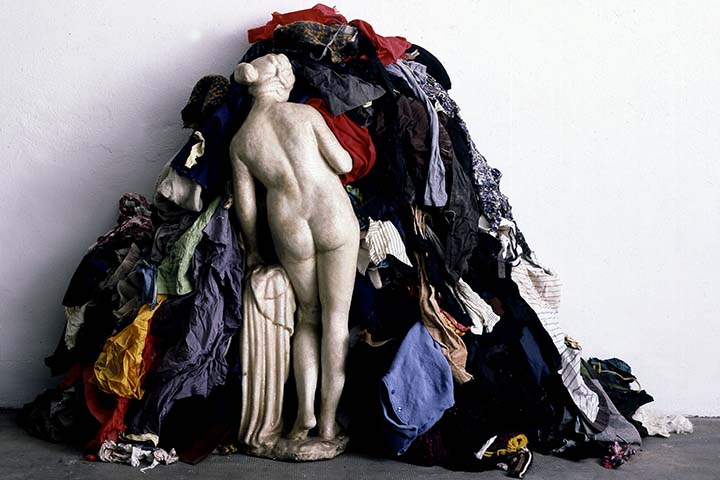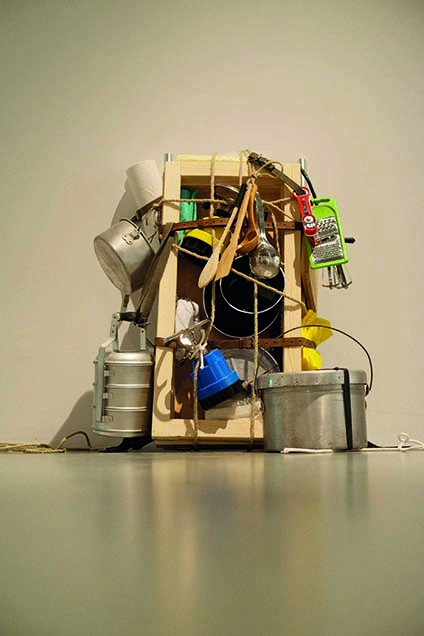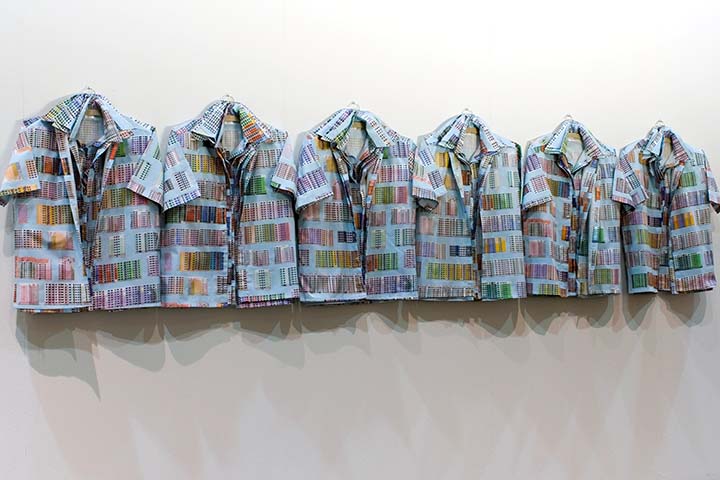Is Fashion a true form of art that can also be sustainable? In many ways, the answer is yes. Through the choices we make with our wardrobe, we tend to express our own personality and taste, often revealing our own characteristics. When we buy and put on a garment, we reflect a social group as part of a global community. Therefore, clothes are not only an individual’s necessity, but also a universal collective form of art, which in recent years has started to promote new values and an ethic code for a social and environmentally responsible fashion society.
Artists and experts use the semiology to explore how clothing relates to our body, the society, and thus becomes the natural extension of our soul. They also use the power of fashion as social energy to capture a global audience’s attention on the wider issues of our societies: from climate change to the feminist movement and political challenges of today’s world. Through artworks and exhibitions around the world, these experts and artists encourage us to look at and relate to the world more critically, thinking about our actions in a more conscious way.

“Fashion as Social Energy” Exhibition
“Fashion as Social Energy” is the first Italian exhibition entirely dedicated to the relationship between Art and Fashion and beautifully interpreted by fourteen leading Italian and international artists featuring their own ‘unique’ personal view of fashion and art.
The exhibition, organised by Connecting Cultures, includes the pioneering work by some of the foremost avant-garde artists of our time. Among them Luigi Coppola and Marzia Migliora, Rä di Martino, Mella Jaarsma, Kimsooja, Claudia Losi, Lucy+Jorge Orta, Maria Papadimitriou, Michelangelo Pistoletto, Kateřina Šedá, Nasan Tur, Otto von Busch, Wurmkos and Bassa Sartoria and Andrea Zittel. For an intimate journey through values and new sensibilities, beyond apparels and ornaments, desires and social distinctions, this event presents a different way of looking at fashion and depicts a more interesting way of relating to fashion as a driver of relations.
Curated by Anna Detheridge, President of Connecting Cultures and Gabi Scardi, art historian and international curator, and sponsored by the Regione Lombardia and Camera della Moda Italiana (CNMI), in partnership with Ermenegildo Zegna under the aegis of “Expo in Città” event, “Fashion as Social Energy” is running until 30th August in Milan at Palazzo Morando.

From know-how to know-why
Fashion, as in many other fields, involves two key concepts: the know-how (skills) and the know-why (theoretical understanding) as both are important components of knowledge. Even if it is more difficult to transfer skills and abilities (required to produce) than technical data and notice (required to inform), we need to turn the know-why into the know-how for a new outlook fashion, where, with the help of companies and multi-brands, we can know how to manage responsibility in the fashion industry.
Moreover, the term “Fashion” is always synonymous with the Genius loci, representing a closed interaction between space and identity, and establishing a spiritual, emotional and cultural connection with a place and its territory. So, the Genius loci acts like an anchor to tradition, despite the changes.
To this end, the “Fashion as Social Energy” exhibition recently presented at Palazzo Morando a conference entitled: “Dal Know how al know why: Trasparenza e responsabilità di filiera del settore moda,” sponsored by Connecting Cultures and Milano Fashion Institute, as part of a course dedicated to the importance of an eco-conscious fashion today, trying to explain the Genius loci’s concept, associating it with the importance of know-why.
The conference was attended by many industry experts. Among them was Luca Mirabassi, co-founder and CEO of Lorena Antoniazzi who talked about the [Italian] Genius loci and its importance for the [Italian] style:
“[Other countries] like China would like to copy our model, recreating productive districts where supply chains are made of micro-suppliers in order to offer their product to a higher range of consumers. However, they won’t be able to copy our genius loci because we have an ancient culture and story: our craftsmanship is not learned in a few weeks. Moreover, we were capable of combining craftsmanship with both a cultural and technological evolution: we still continue to train young people, creating schools where they can learn a trade. This is summarised in three key concepts: property, traceability and training.”
Mirabassi also talked about the “Botteghe dei Mestieri”, a pilot project in the textile industry, supported by the Ministry of Labour and Social Policy, that recruits young workers within companies that have joined the project for a year, with the purpose of absorbing young people onto its staff.
Moving on in the discussion, we had the intervention of Carla Biffi, Biffi boutiques-Federica Ricci’s buyer, addressing the issues of responsibility of multi-brands and how can we communicate the know-why, turning it into know-how?
Biffi commented: “This type of communication is easiest if supported by a direct channel (positive example is that of a Flash Store, where there is a direct contact with the consumer; it became a little bit more complicated in the presence of an indirect communication.”
Biffi also addressed the issues and challenges of eco-sustainability seen from Biffi’s point of view:
“We, multi-brands need to communicate to a final consumer, not an industry consumer, but a well-prepared supply chain, able to recognise the cost-quality connection. For this reason, consumers need clarity about the product they buy: what they are buying, where it comes from, what it is, if it is true what is written on the label, etc. How can we help the consumer to obtain this clarity? We need to be clear about the product source. We need a communication support, both direct and online, that is emotional.”
Biffi adds:
Companies need to help us to be credible with consumers developing effective storytelling programmes and creating ad hoc advertising campaigns to better explain what is behind the ‘own brand’, even the most famous ones.
The conference’s moderator was Francesca Romana Rinaldi, director of Master in Brand & Retail Management MFI and co-author (with Salvo Testa) of “L’Impresa Moda Responsabile”, an exploratory journey into the relationship between fashion and corporate responsibility, offering challenges and opportunities of sustainability in the global fashion industry. Francesca has also recently published The Responsibility Manifesto, a reading meant to instil some ideas on how to update traditional business models to achieve a sustainable, competitive advantage and create a shared value for a wide range of stakeholders.
